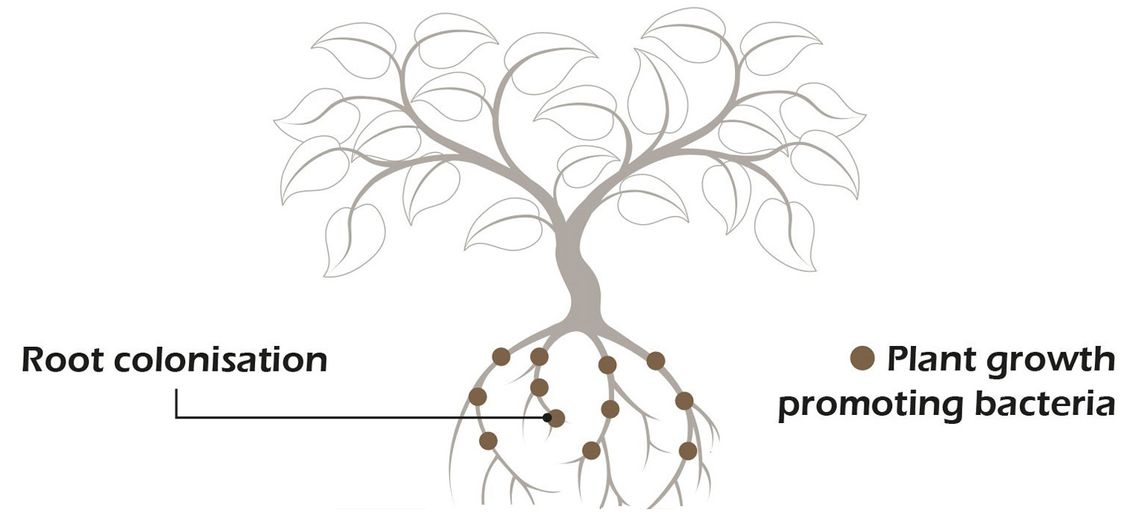Benefits For Plants
DIRECT MECHANISM
Increases uptake of minerals
Increases the bioavailability of nitrogen
Promotes plant growth
Modulate plant growth hormone levels
INDIRECT MECHANISM
Produces siderophores, which make iron available to the plant
Increases systemic resistance to disease
Fights Fusarium, Rhizoctonia, Pythium, Botrytis and
many more plant pathogens
Bacteria become a food source for the plant at cell death stage

Benefits For Soil
Improves nutrient availability by increasing the cationic exchange capacity
Improves water retention
Increases pH
Increases physical and chemical stability of soil
Decreases nitrogen, nitrate, nitrite and phosphate run off by capturing nutrients
Further Benefits For Plants
The use of plant growth promoting bacteria results in enhanced disease resistance, increased yields, better root systems, bushier plants with more vitality, greener leaves and enhanced tolerance to atmospheric stressors. This ultimately leads to a reduction in the requirement for pesticide and fertiliser usage for growers.
Field trial analyses showed a 20% increase in grass growth, 12% increased yields for barley and a statistically significant increase in yield of alfalfa over two years. Broccoli trials to date have shown a 42% increase in yield. Tomato trials showed a statistically significant increase in yield and Brix index (taste, odour).
Trial data and further information are available upon request.
Plant Growth Promoting Bacteria Field Trials in Europe, Dr. Karen O’Hanlon 2019; Endophytes for a Growing World Cambridge University Press ISBN 978-1-108-47176-3

Increase root formation in Viburnum (plant on the right-hand side treated with plant growth promoting bacteria).

Increased root nodulation in nitrogen crops (alfalfa and beans).
